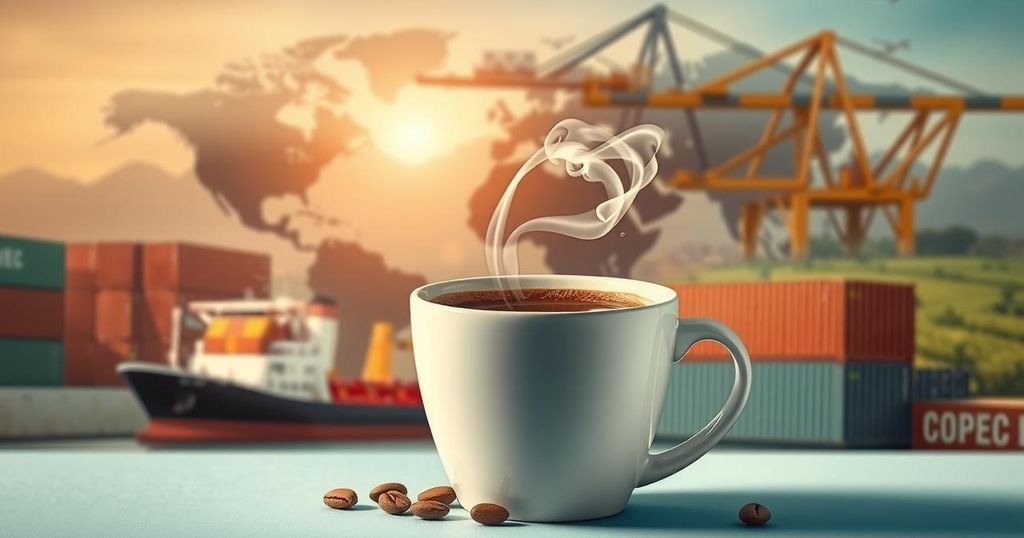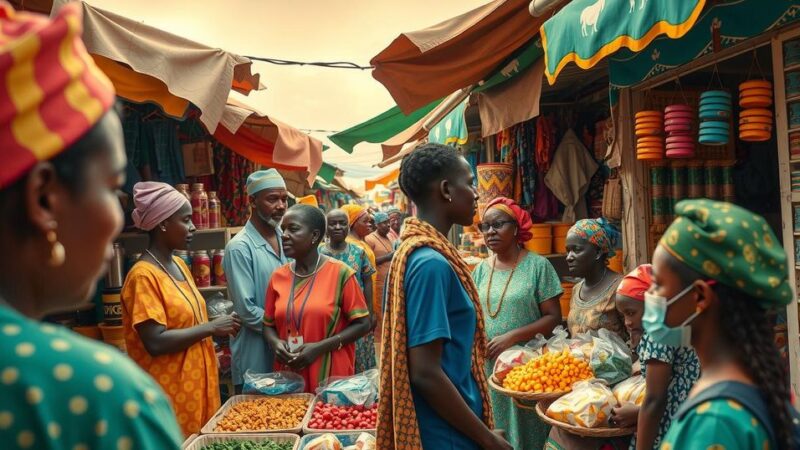Coffee prices have soared due to climate change and political issues, with arabica prices hitting a record $3.48 per pound. Poor harvests in Brazil and Vietnam contribute to the volatility. Growing demand from China contrasts with a decline in Europe, while small producers struggle in a market dominated by large firms. A new G7 fund aims to support sustainable coffee production.
Coffee prices have surged due to climate change, political instability, and varied market factors, leading to increased costs for consumers. While this upward trend may stabilize soon, industry experts foresee ongoing volatility, complicating the outlook for small-scale producers, many of whom manage farms smaller than one hectare.
The cost of arabica coffee beans in New York rose by 90 percent last year, reaching a historic high of $3.48 per pound on December 10, 2022, while robusta bean prices have similarly increased. Concerns regarding poor harvests in Brazil and Vietnam, the top two coffee producers, have exacerbated price inflation due to rising demand.
Disruptions in trade routes, particularly in the Red Sea affecting shipments from Southeast Asia to Europe, have caused prolonged delays. Anticipations surrounding a European Union law aimed at banning deforestation-related product imports have also contributed to market uncertainty as its implementation was postponed to December 30 this year.
Furthermore, political tensions, such as proposed tariffs from former President Donald Trump affecting coffee among other goods, injects further unpredictability into coffee pricing. While some analysts, like Carlos Mera of Rabobank, speculate potential price reductions, low stock levels imply that significant fluctuations in either direction should be expected.
Climate change represents a notable risk to coffee production; arabica beans thrive at higher altitudes but are vulnerable to adverse weather circumstances. In contrast, robusta beans are more adaptable to varying conditions but are less favored by consumers. The U.S. Department of Agriculture forecasts production of around 175 million 60-kilogram bags in the 2024-2025 season, comprising 56 percent arabica and 44 percent robusta.
New threats have emerged for both varieties in their traditional growing regions, including late frosts, poorly-timed rains, and pest infestations, especially in Brazil and Vietnam. As climate patterns shift, regions like Togo and Ivory Coast may be reconsidered for coffee cultivation, according to Guillaume David of CIRAD.
Growing demand for coffee has begun to expand into nations with a previously minimal coffee market, such as China, which imported approximately 4.3 million bags in the 2023-2024 season compared to just 1.5 million four years prior. However, demand in Europe has been on the decline due to heightened living costs, particularly noted in Germany.
Despite surging coffee prices, small-scale farmers remain impoverished and largely powerless in a market dominated by large multinational firms. With fair trade initiatives only affecting a small fraction of the market, experts argue that stabilizing prices is critical for the future viability of these growers, many of whom face the imminent threat of abandoning their crops amidst fluctuating prices.
The Group of Seven (G7) recently approved a Global Coffee Sustainability and Resilience Fund to drive investment into improving productivity and ensuring fairer compensations for coffee producers, a crucial development for the industry’s future.
The article discusses the recent spike in coffee prices driven by a combination of factors including climate change, political issues, and shifts in global market demand. The text highlights the impact these changes have on small coffee producers, their economic stability, and future coffee availability. It also reflects on the shifts in consumer behavior, with rising demand from markets such as China, contrasted with declining interest in Europe. The discussion also touches on how political decisions and environmental factors complicate the industry, affecting both supply chains and production practices.
In summary, coffee prices are at an unprecedented high due to various global factors including climate challenges and political influences. The surge in prices poses a risk to small farmers who struggle economically and face uncertainties about their future. Concerted efforts, such as the establishment of the G7 Global Coffee Sustainability Fund, aim to support these growers, ensuring they receive fair compensation while fostering stability in the volatile coffee market.
Original Source: www.taipeitimes.com






